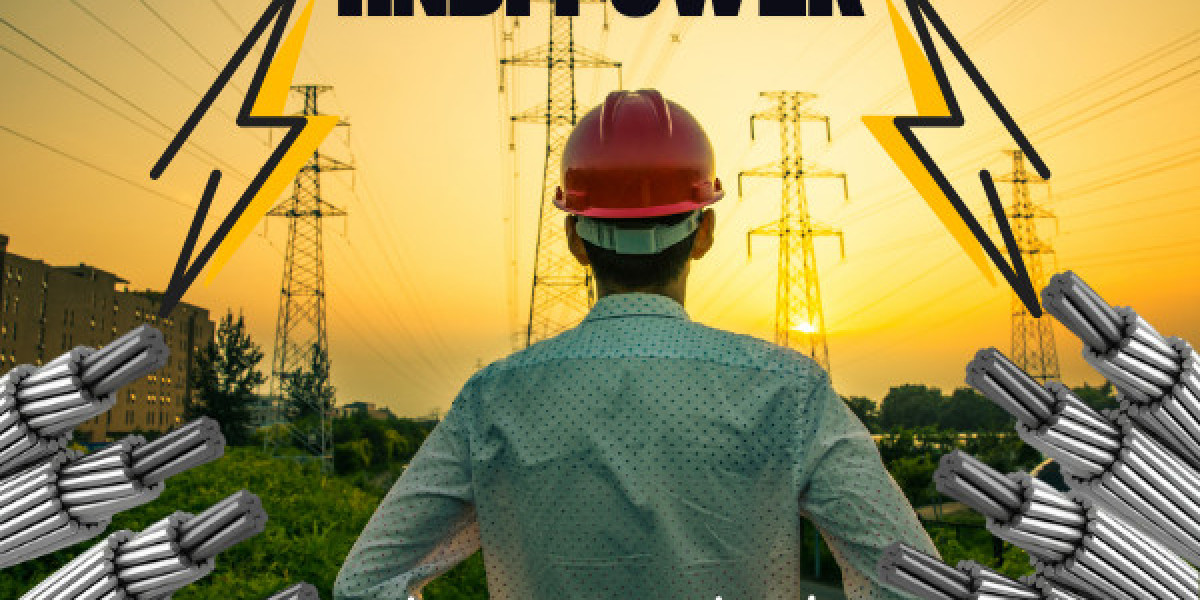Bare conductors are the backbone of modern power transmission networks, serving as the key medium for carrying electricity from generation sources to distribution systems. Designed without insulation, these conductors ensure efficient current flow, high tensile strength, and durability under extreme weather and mechanical conditions.
As a global manufacturer of overhead conductors and power cables, HNBF Power delivers high-performance bare conductors engineered to meet international standards and diverse grid requirements. This guide explains the fundamentals, types, applications, and selection factors of bare conductors for engineers, project managers, and procurement professionals.
What Is a Bare Conductor?
A bare conductor is a metallic wire or stranded cable without any insulating or protective covering. It is primarily used for overhead transmission and distribution lines where environmental exposure is expected. These conductors are designed to carry large electrical currents safely and efficiently while minimizing energy loss.
Bare conductors are typically made from aluminum, copper, or a combination of materials like aluminum with a steel core for added mechanical strength.
Common Types of Bare Conductors
1. AAC (All Aluminum Conductor)
AAC conductors are composed solely of aluminum strands. They are lightweight and corrosion-resistant, making them ideal for short-span distribution networks and urban installations where mechanical strength is less critical.
2. AAAC (All Aluminum Alloy Conductor)
AAAC conductors consist of aluminum alloy strands, offering higher strength and better sag performance than AAC. They are often used in coastal and high-corrosion environments due to their superior resistance to oxidation.
3. ACSR (Aluminum Conductor Steel Reinforced)
ACSR conductors combine the conductivity of aluminum with the tensile strength of steel. The steel core provides excellent mechanical support, allowing long-span installations for high-voltage transmission lines. This makes ACSR one of the most commonly used bare conductors worldwide.
4. ABC (Aerial Bundled Conductor)
While technically semi-insulated, ABC systems are related to bare conductors and are used for low-voltage overhead distribution. They reduce short circuits and enhance safety in densely populated areas.
Key Applications of Bare Conductors
Transmission Lines: Used in high-voltage networks to transmit electricity over long distances with minimal loss.
Distribution Networks: Deployed in medium and low-voltage systems for local power delivery.
Substation Connections: Ideal for busbars, jumpers, and earthing networks.
Railway Electrification: ACSR and AAAC are often utilized in railway power supply systems for their strength and conductivity.
Engineering and Performance Considerations
When selecting a bare conductor, engineers must evaluate several technical parameters:
Current Carrying Capacity: Determined by the conductor material and cross-sectional area.
Mechanical Strength: Important for withstanding wind, ice loading, and tension from long spans.
Thermal Expansion: Aluminum expands more than steel, so the combination in ACSR minimizes sag.
Corrosion Resistance: Alloyed conductors (AAAC) perform better in coastal or polluted environments.
Cost Efficiency: Aluminum-based conductors provide a balance between conductivity, weight, and price.
HNBF Power’s Expertise in Bare Conductor Manufacturing
HNBF Power specializes in producing high-quality AAC, AAAC, and ACSR conductors designed for global energy networks. Each conductor undergoes strict quality control and conforms to IEC, ASTM, BS, and DIN standards.
With advanced manufacturing facilities and years of engineering experience, HNBF Power ensures:
Precision stranding for consistent conductivity
Optimal mechanical performance under varying climatic conditions
Customizable conductor sizes and materials for diverse applications
Reliable support for procurement and technical teams worldwide
By focusing on innovation and reliability, HNBF Power continues to deliver solutions that power national grids, infrastructure projects, and renewable energy systems.
FAQs About Bare Conductors
1. What is the main advantage of using bare conductors in overhead lines?
Bare conductors allow for efficient current flow without insulation, reducing material costs and enabling heat dissipation into the environment.
2. How is an ACSR conductor different from AAAC?
ACSR uses a steel core for added tensile strength, while AAAC is made from an aluminum alloy that offers moderate strength with better corrosion resistance.
3. Can bare conductors be used for underground applications?
No. Bare conductors are designed for overhead installations. Underground systems require insulated cables to prevent contact with soil and moisture.
4. What standards govern the manufacturing of bare conductors?
Bare conductors are typically manufactured according to international standards such as IEC 61089, ASTM B232, BS 215, and DIN 48204.
5. How does HNBF Power ensure conductor quality?
HNBF Power utilizes advanced production technology, strict material testing, and precise stranding processes to ensure compliance with global standards and long-term performance.
Conclusion
Bare conductors are indispensable components of modern electrical infrastructure, ensuring reliable energy transmission from generation to consumption. With decades of experience in conductor manufacturing, HNBF Power delivers high-quality, customized bare conductors tailored to meet specific project and environmental requirements.
Contact HNBF Power today to discuss your project needs and explore tailored bare conductor solutions engineered for performance, safety, and durability.










